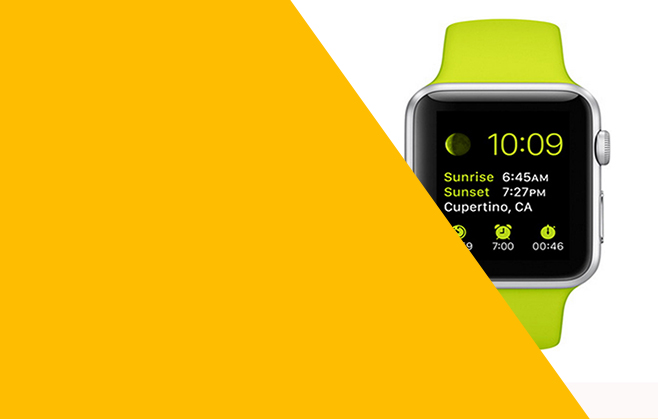
What will Apple’s iWatch mean for retailers and marketers?
With only a month to go until Apple’s iWatch is available to buy in the UK, we at The Practice were interested to consider how the release will shake up the tech sector. Will it stand to compete against our other devices, and how will marketers have to adapt to a new product?
For the wearables market, the Apple iWatch is certainly going to be the most sought after gadget upon launch. Analysts at Forrester Researcb estimate that Apple will sell around 10 million iWatches in the first year alone- that’s more than Nike’s Fuelband, Samsung Gear, the Fitbit and Jawbone combined, have sold to date. While the iWatch will be the hot new device, this hasn’t deterred other manufacturers from vying for long-term attention. Last year for instance, Samsung announced its sixth smartwatch, barely a year after releasing its fifth, while Fitbit and Jawbone made strides with their wristbands, adding extra sensors including heart-rate monitors. Although the iWatch is likely to have greater street cred, it still comes with a price that’s steeper than all its competitors. Therefore we imagine that other wearables manufacturers will still be able to retain their customers, especially with updated products.
For marketers, there are a number of ways in which the Apple iWatch could boost sales and customer acquisition. Firstly, it has long been expected that the iWatch will be able to connect with iBeacon, Apple’s location system powered by Bluetooth. iBeacon is essentially a transmission network which will enable local businesses to locate nearby Apple devices, and send targeted marketing messages to them. Added to this, when iWatch users use their devices to shop online or to browse products, this data can be captured by marketers for customer research purposes, or for real-time promotional advertising, for instance. The different interface will also present a challenge, requiring video creators, advertisers and web designers to create new formats, and especially content that doesn’t appear intrude on the user experience. Apple’s iAds for instance, which is the company’s mobile ad business, is projected to enable iWatch marketing when it launches, meaning ads will be displayed in line with the product’s smaller screen.
When the iWatch launches next month, it will already come with over 12 available apps, including those from Target, American Airlines, Starwood hotel group, Nike, Instagram, Twitter, Evernote, TripAdvisor and eBay. One of the best apps debuted at Apple’s media event earlier this month, was that of daily deals company, Retale. Retale’s new iWatch app will ultimately work in tandem with the brand’s existing iPhone app, offering customers a seamless experience. For instance, when the app’s users see a deal or product they wish to buy on their Retale iPhone app, they will be able to use their watch app to find the retailer’s nearest store location, complete with on-screen directions. By having unique benefits on each platform, we like the fact that both apps will be able to work together to deliver an all-round consumer experience. For new apps, Apple’s compatible WatchKit platform is already available to developers, and there’s speculation that the watch will soon have its own app store, ready to house a whole new generation of apps which adhere to the iWatch’s specifications.
What are your initial thoughts on Apple’ iWatch? Do you think it will become a core piece of technology alongside our tablets and smartphones? Share your comments with us by tweeting to @PracticeDigital and on Facebook too.




